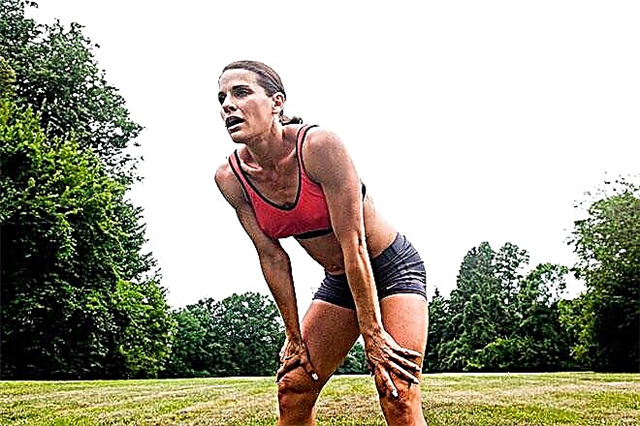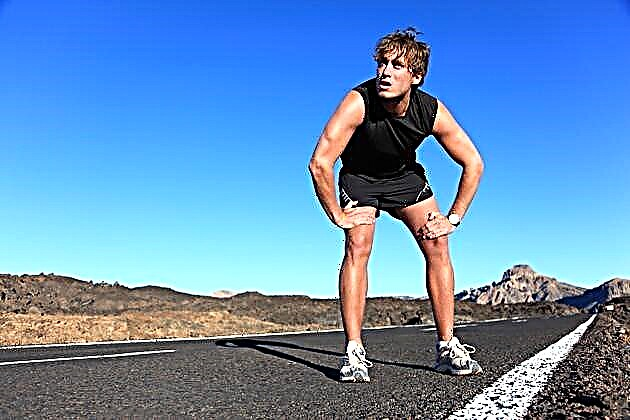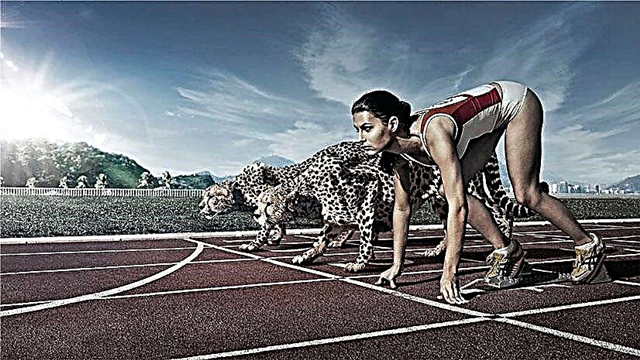Crossfit exercises
6K 3 04/01/2018 (last revision: 03/20/2019)
CrossFit is a discipline aimed at developing functional strength and endurance. Therefore, only here you can find a huge number of specific exercises from gymnastics and acrobatics. One such exercise was the elbow stand.
General information
Note: The elbow stand is sometimes mistakenly confused with the elbow and toe stand exercise, that is, with the classic bar. But this is not the case.
The Elbow Stand is a static exercise designed to develop the ligaments and joints of the upper shoulder girdle. In addition, the exercise perfectly engages the core and abdominal muscles, which makes it versatile for maintaining good shape at home.
What muscles work?
The elbow stand is a complex exercise that, although it has a static function, simultaneously acts on the shoulder girdle, emphasizes the load on the deltas, muscles of the press and legs. Let's take a closer look at which muscles are involved in this exercise:
| Muscle group | Load type | What is responsible for? |
| Upper deltas | Static | Takes on the main load of holding the body. |
| Front deltas | Static | Takes part of the load when the body is tilted forward. |
| Rear deltas | Static | It takes part of the load when the body is tilted back. |
| Core muscles | Statodynamic | Responsible for the straight position of the body. |
| Rectus transverse muscle | Depending on the variation | Responsible for holding the body in an extended position. |
| Oblique abdominal muscles | Stabilizing | Helps to neutralize the process of tilting the body to the sides. |
| Hip biceps | Stabilizing | Responsible for the position of the legs while holding. |
| Quadriceps | Static | It is a muscle that antagonizes the "hamstring". |
| Calf | Stabilizing | Responsible for the position of the legs. A well-extended leg is an additional static coordination load. |
| Gluteus muscle | Statodynamic | Responsible for the position of the body in the hip joint. The load is similar to the abdominal muscles. |
As you can see, the main load is taken by the abdominal muscles and upper deltas. However, you can create additional dynamic loading by changing the position of the legs or body. However, this is only allowed with perfect mastery of the classical elbow stand technique.
How to do an elbow stand correctly?
The technique of doing the elbow stand seems to be quite simple, however, the exercise requires you to be extremely focused and strictly follow the instructions.

So, how to do an elbow stand correctly step by step:
- To begin with, you need to take the "lying position", with a change in the position of the hands, so that the main emphasis comes not on the palms, but on the elbows.
- Next, leaning your body against the wall, begin to slowly raise the body so as to stand on a headstand. It is important to understand that the body must be lifted impulsively in 2 stages: first, the body must be lifted on bent legs; straighten your legs.
When performing the exercise, you need to pay attention to the following aspects:
- Body position - it should be perfectly extended. It is not allowed to support the body on the wall, because this significantly reduces the load on the target muscle groups.
- If you cannot keep the body in a perfectly straight state, try first to hold it in the "bent legs" position, this will reduce the load on the press, and reduce coordination perception.
If you need to shift the emphasis, try a variation of the abdominal elbow stand:
- First you need to stand on any variation of the bridge (the bridge on the elbows would be the ideal solution).
- Then slowly raise the body, keeping the legs bent.
- Then, having taken the starting position for the elbow stand, rotate the body and legs in different directions.
This variation is called "Mexican", and is more difficult, but also highly effective for the abdominal muscles. It is actively used in gymnastics and sports disciplines applied to it.
To make it easier to get onto the stand itself, you can use the following tricks:
- Rocking the body. For example, from the “basket” position, when your body has an initial impulse, thanks to which you can easily bring the body into the desired position.
- Move to the rack from the bridge position. It is important to maintain concentration here, as you can easily fall.
- Take the starting position with the help of a partner. This reduces the coordination load and allows you to hold out longer. Recommended for people who have never tried this exercise before. A week after training with a partner, you can begin to try to stand on your elbows yourself.
If, even with all the tricks, you cannot get into a full-fledged handstand, it is recommended to improve the condition of the abdominal muscles and upper deltas. The press will help keep the body in the correct position, while the deltas are responsible for the very possibility of taking the correct position.
Contraindications
This exercise has no specific contraindications, however, due to the large static load and the position of the body, it is not recommended for people to perform:
- With high blood pressure.
- People suffering from diseases of the cardiovascular system.
- People with shoulder and elbow problems.
To summarize
If we consider such a variation as a stand in support on the elbows, then it can be noted that this exercise is much simpler than the one described earlier, because does not require a lot of development of the entire muscle corset. Remember that if you regularly stand on your elbows, and then can move on to a handstand, then you will perfectly develop your static strength indicators, and most importantly, you will be able to develop the ratio of strength to muscle mass, which is especially important for crossfitters. ...









